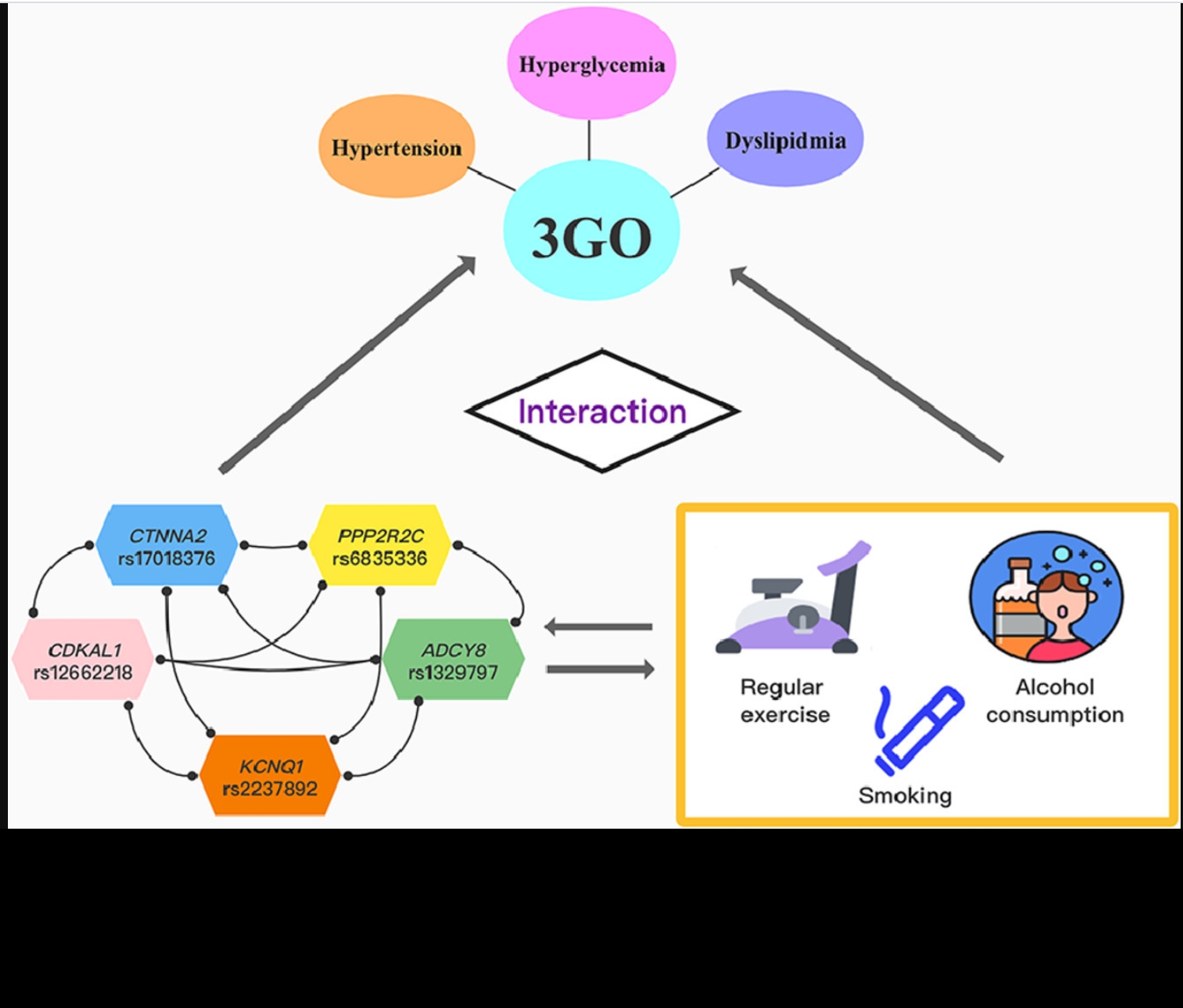Regular exercise, alcohol consumption, and smoking interact with the polygenetic risk scores involved in insulin sensitivity and secretion for the risk of concurrent hyperglycemia, hypertension, and dyslipidemia
Jun-Yu Zhou Nutrition Available online 21 July 2021,
Highlights
• Carrying high-PRS, including insulin resistance and secretion-related genes, increased the 3GO risk by 2.567 times.
• The PRS was significantly positively correlated with hyperglycemia, dyslipidemia, and hypertension.
• There was a significant interaction between PRS and alcohol intake, exercise, and smoking to affect the 3GO risk.
• In the participants having high alcohol intake, smoking, and low physical activity, the incidence of 3GO was significantly increased.
Objectives
3GO, defined as the simultaneous presence of hypertension, hyperglycemia, and dyslipidemia, is rising in Asians. We determined polygenetic risk scores(PRS) for 3GO risk and the interactions between PRS and lifestyle habits for 3GO risk in Korean adults aged 40-77 recruited from the urban hospital cohort of the Korean Genomic and Epidemiological Study(KoGES) conducted from 2004 to 2013.
Methods
Participants were divided into cases with 3GO(n=570) and controls without any of the three components of 3GO(0GO; n=14,155). Genome-wide association study(GWAS) revealed genetic variants, and generalized multifactor dimensionality reduction (GMDR) was used to identify the best genetic variant-gene variant interaction model. PRS was calculated from the genetic variants in the best model, and the PRS interactions with lifestyles for 3GO risk were investigated.
Results
The PRS for 3GO risk was calculated from five genetic variants, that is, CTNNA2_rs17018376, PPP2R2C_rs6835336, CDKAL1_rs12662218, ADCY8_rs1329797, and KCNQ1_rs2237892. After adjusting for lifestyle, a high-PRS was found to increase the risk of 3GO by 2.567-fold (95% CI=1.917-3.437) as compared with controls(P<0.001). PRS interacted with serum glucose(OR=2.283, 95% CI=1.557-3.347), low-HDL(OR=2.605, 95% CI=1.701-3.991) and triglyceride concentrations(OR=2.468, 95% CI=1.630-3.737; P<0.001). Interactions between PRS and alcohol(P<0.0001), exercise(P=0.035), and smoking(P = 0.006) significantly affected 3GO risk. PRSs were significantly correlated with 3GO risk among smokers, alcohol drinkers, and those that exercised infrequently.
Conclusion
PRSs calculated using a PRS model based on 5 SNPs revealed that insulin sensitivity and secretion were significantly associated with 3GO risk. Furthermore, reducing alcohol intake, exercising regularly, and quitting smoking might be effective for reducing 3GO risk in individuals with a high PRS.














